Wikipedia:Wikipedia Signpost/2015-01-14/Featured content
Appearance
Featured content
Citations are needed

The Saalfeld Fairy Grottoes in Germany, as photographed by Ansgar Koreng.
Yes, I did change the title for this week at the last minute, then put it into the caption here because I still liked it. Deal.
This Signpost "featured content" report covers material promoted from 28 December 2014 through 4 January 2015.
Featured articles
Six featured articles were promoted this week.
John Barrymore as the titular role in Hamlet (1922). This image has a big reflection on the lower right hand corner (not shown), which proved far more resistant to attempts to fix than I had hoped. Hence why it hasn't been replaced with a restored version yet. Possibly not ever. Curse you, light! ...Wait! I didn't mean that!

- John Barrymore (nominated by SchroCat) Barrymore was that rarest of actors, one who successfully made the transition from silent films to talkies, thanks to his stage-trained voice. He is remembered today for his genius in the theater, his good looks, and as one of the most influential actors of his age. He started as a stage actor in light comedy, then advanced to classical drama. Some notable roles he played were in the play Justice (1916), by John Galsworthy, and the Shakespeare dramas Richard III (1920) and Hamlet (1922). For his role as Hamlet he earned the title of "greatest living American tragedian". For his role in the silent mystery drama film as Dr. Jekyll and Mr. Hyde (1920) and Sherlock Holmes (1922) he received the nickname the Great Profile. Unfortunately he also abused alcohol from the age of 14, was married and divorced four times, and ended up playing drunken has-beens in a kind of self-parody.
- A Handful of Dust (nominated by Brianboulton) This satirical comic novel by the well-known British author Evelyn Waugh was published early in his career, but is generally considered to be one of his best works, figuring on different lists as one of the 20th century's best novels, and having been dramatised for stage, screen, and radio. A Handful of Dust follows Tony Last who, betrayed by his wife and tormented by the futility of human existence, joins an expedition to the Brazilian jungle. Last gets lost and, ill in the jungle, meets an insane settler who is illiterate but owns books. Tony offers to read to him, but even after Tony has recovered the settler keeps Tony at home and forces him to read the novels of Charles Dickens to him. Ultimately, the old man makes Last his prisoner and tells people that the failed explorer has died, so no-one will ever come to look for him, and he can read Dickens to the old man forever...
- Telescopium (nominated by Casliber) Telescopium, covering 40° of the night sky, is "a minor constellation in the southern celestial hemisphere." If you're south of latitude 33°N you will be able to see the whole constellation, with its brightest star Alpha Telescopii or α Telescopii, which is 278 light-years away from Earth, has an apparent magnitude of 3.5, is blue-white, 3 times the radius of our Sun and 800 times brighter. The next brightest star in the constellation is Zeta Telescopii, an orange K-type giant, 1.52 times more massive than the Sun, and 512 times as bright, and a little bit closer: 127 light years away. Nicolas Louis de Lacaille introduced the constellation under the French name of le Telescope in 1751, after spending 2 years at the Cape of Good Hope cataloguing some 10,000 stars. By 1763 he'd Latinised the name to "Telescopium". No planets have been discovered yet, but several stars have brown dwarf companions. There's a few galaxies in it, including NGC 6845, a set of four interacting galaxies, but you'll need to look at Telescopium with a telescope to see them, ironically enough.
- William Wurtenburg (nominated by Awardgive) "Bill" Wurtenburg (1863–1957) was an American college football player, coach and referee. He enrolled at Yale University as a medical student in 1886 and had a brilliant career in college football while also completing his studies. Bill played for Yale from 1886 to 1889 and again in 1891. He was awarded a medical degree in 1893, and in the following year was hired as coach by the United States Naval Academy. They had a record season. He was then taken up by Dartmouth College and coached them for five years. Bill Wurtenburg began to work as a physician in 1904, and he set up a practice in New Haven, Connecticut. He died in 1957 at the age of 93, showing that giving up football when you reach the age of 40 is good for your health.
- Smyth Report (nominated by Hawkeye7) Formally known as A General Account of the Development of Methods of Using Atomic Energy for Military Purposes, this report was released to the public on 12 August 1945, six days after the first atomic bomb was dropped. It became an instant best-seller, with almost 127,000 copies of the first eight printings being sold. As anything published in the Smyth Report became public knowledge, the report contained only information that was either already common scientific knowledge, or that could be easily surmised. As such, many details of chemistry, metallurgy and ordnance were omitted.
- AI Mk. IV radar (nominated by Maury Markowitz) The Airborne Interception radar, Mark IV was "the operational model of the world's first air-to-air radar system." A development of the Mk. III radar with a new oscillator fitted to the transmitter, it was first tested in July 1940, and proved itself by detecting aircraft at a range of 20,000 feet (6.1 km). A contract for 3,000 units was issued, and the Mk. IV was introduced to active service in early 1941 and fitted to Bristol Beaufighters. To use it, the operator had to pick up the signals on two cathode-ray tubes in the cockpit. Gradually the aircrews became proficient in its use, assisted by ground-based radar, and interception rates climbed geometrically. It was replaced by the Mk. VII, which used a cavity magnetron, towards the end of 1941. Thereafter aircraft fitted with Mk. IV sets were used to home in on Luftwaffe night-fighters operating their own form of radar; the absence of a magnetron meant that if one of these was shot down the Germans would not get their hands on the top secret device. You'll notice a gap in numbering, but unfortunately, the Mk. V and Mk. VI - based on secret alien technology - are classified, but if you go to my website, you'll learn the truth![citation needed]Citation needed is a joke
Featured lists
Five featured lists were promoted this week.

- Hugo Award for Best Fancast (nominated by PresN) Okay, so the Hugo Award is for the best science fiction, and a fan cast is a podcast done by a fan. So the Hugo Award for Best Fancast is for "the best non-professional audio or video periodical devoted to science fiction, fantasy, or related subjects". Two fancasts have won the award (one twice) since it was first awarded in 2012. The first winner was SF Squeecast "[in] which a group of SF and Fantasy professionals squee about things SF-nal, in a never ending panel discussion of vague positivity". It won twice, and then its producers declined to be considered for an award in 2014. Last year's winner was SF Signal. The winner for the year 2125 will be SF Art, a 3D hyper-experiential fancast about science fiction artwork, broadcast from the moons of Uranus. Ed.: Did I wikilink that right?
- Matthew McConaughey filmography (nominated by Cowlibob) The American actor Matthew McConaughey has appeared in over 40 films from 1993 onwards. After the new millennium he became typecast as a romantic comedy lead, but from 2010 he underwent a "McConaissance" (that's what they called it) and became better known for his dramatic roles. His latest film is The Sea of Trees about an American who travels to Aokigahara, Japan, to commit suicide. He encounters Ken Watanabe, also playing a would-be suicide, and the two men begin a journey of self-reflection and survival.
- List of accolades received by Vidya Balan (nominated by Krimuk90) Vidya Balan is an Indian Bollywood film actress. Her film career started in 2003 with the Bengali film Bhalo Theko, for which she won the Anandalok Award for Best Actress. Her first Bollywood film was in 2005, and since then she's won 53 film awards. In 2012 she was given the Prabha Khaitan Puraskar for her work towards the empowerment of women, and last year Vidya was awarded the Padma Shri by the Indian government for her contributions to the arts. In 2011 Vidya starred in The Dirty Picture, a film inspired by the lives of actresses Silk Smitha, Nylon Nalini and Disco Shanti. We quote from a review of the movie; "Vidya Balan is the hot topic in every corner for her flaunts and oomph."
- List of tributaries of Catawissa Creek (nominated by Jakob) This lists every tributary flowing into the 41.8-mile (67.3 km) long Catawissa Creek. There's 26 named tributaries, of which 19 flow directly into the Creek. They vary in length from 1 mile (1.6 km) to 10.8 miles (17.4 km). There's been a lot of care put into this: photographs of most of the tributaries and Catawissa Creek itself, a detailed lead, and, perhaps most impressively, a constellation of highly informative articles covering every single tributary linked to by the list, impeccably sourced .
- Akshay Kumar filmography (nominated by Skr15081997) Akshay Kumar is an Indian film actor and producer, whose debut was a 7-second appearance as a karate instructor in the 1987 film Aaj - but has grown in prominence since. Kumar is a black belt in Taekwondo and does his own stunts, including a scene in the film Khiladi 420 where he "climbed a running plane, stood on top of the plane flying a thousand feet in the air, and jumped from the plane onto a hot air balloon." Said film's plot involves twin brothers, Dev and Anand, both played by Kumar; Dev is bad and Anand is good; we don't know which one was involved in the impressive stunt we described, but if he bounced off the balloon, it was probably Dev.
-
Robert Cornelius, the first known photograph of a human in American history: The only history that matters.[citation needed]Citation needed is a joke
-
Vincent van Gogh - Self-Portrait
Featured pictures
Sixteen featured pictures were promoted this week.




- Renaissance Center, Detroit, Michigan (created and nominated by Chris Woodrich) The Renaissance Center is a group of seven interconnected skyscrapers in Detroit, Michigan. The tall one in the middle is the "Detroit Marriott at the Renaissance Center", a 73-storey hotel built in 1977. Around it are four 39-storey and two 21-storey towers, the whole forming one of the world's largest commercial complexes, a veritable "city within a city", with 5,552,000 square feet (515,800 m2) of floorspace. It was conceived by Henry Ford II and financed by the Ford Motor Company. At the top of the main tower is a three-storey rooftop restaurant, which used to revolve to allow diners to see the views. Now if the restaurant is revolving, it's a sign you've got to slow down on the martinis.
- Robert Cornelius (created by Robert Cornelius, nominated by Nergaal) This daguerreotype of Robert Cornelius is the first known photograph of a human in American history. At the age of 22 Robert Cornelius (1809-1893) began working in his father's lamp manufacturing company, specializing in silver plating and metal polishing. The high quality of his work gained Cornelius a reputation, and he was approached by Joseph Saxton to create silver-plated metal sheets for Saxton to use for a daguerreotype. This sparked his interest in photography, and in the chemical processes used. Around October 1839, Cornelius took a portrait of himself outside of the family store- he stands off-center with an inquisitive face, tousled hair and with his arms crossed looking at us with a curious expression on his face; maybe thinking - am I going to fix this, I wonder? Or am I going to screw it up.... But Cornelius didn't screw it up: he succeeded in creating what is at least one of the first "selfies". One rather wishes he hadn't: It set a bad example, and youth of the time took it up: why there's a photo in our selfie article of a woman in 1900 photographing herself in a mirror, and had the mirror not cut off her dress at the bottom, we might possibly have seen her ankles. Scandalous.
- "The Plumb-pudding in Danger" (created by James Gillray, nominated by Chris Woodrich) The Plumb-pudding in danger; or State Epicures taking un Petit Souper" is a caricature by James Gillray in the form a hand-colored etching depicting William Pitt the Younger, wearing a regimental uniform and hat, sitting at a table with Napoleon, each carving from a large plum pudding which is, in fact, a globe with the continents labelled upon it. Napoleon is carving a thin slice off Europe, but Pitt's slice of the pudding - containing almost everything else - is considerably larger and wide-ranging than Napoleon's. It caricatured the suggestions made made by Napoleon in January 1805 for a reconciliation with Britain. The nominator quotes Martin Rowson as saying it is "probably the most famous political cartoon of all time - it has been stolen over and over and over again by cartoonists ever since."
- The Magpie (created by Claude Monet, nominated by Sca) The Magpie is featured picture with an equally featured article too. The painting is by the French Impressionist painter Claude Monet. Although the magpie is the titular subject, the real subject of the painting is the shadows, which are among the first that Monet painted as coloured: they are blue, as befits the beautiful snow-encrusted landscape, which is actually fairly accurate, at least for how things are subjectively perceived - but which shocked the art experts at the time, and led to its rejection from the Paris Salon of 1869. It's now considered one of Monet's best snowscapes.
- Saalfeld Fairy Grottoes (created by Ansgar Koreng, nominated by Chris Woodrich) The Saalfeld Fairy Grottoes are the effects of mineral deposits on an ancient alum mine near Saalfeld, Germany, which was in operation from the 16th to 19th centuries, then closed off in 1850. Mineral-laden water dripping into the mine's three chambers connected by galleries formed colorful stalagmites and stalactites throughout them. The Guinness Book of World Records suggested that the Fairy Grottoes are "the most colorful cave grottoes in the world". The third chamber, rediscovered in 1913, is called the "Fairy Kingdom" (depicted), illuminated with lights and reflected in a perfectly still pool of water. It is believed that here is were the fairies live in their miniature castles.[citation needed] Our article informs us that: Between 1914 and 2007, more than 20 million people visited the grottoes, which annually draw an average of 160,000 visitors.
- Nave, choir, rood screen, Trinity Chapel, Becket's Crown and cloisters of Canterbury Cathedral (created and nominated by David Iliff)The Canterbury Cathedral, one of the oldest and most famous churches in England, is the cathedral where resides the Archbishop of Canterbury, leader of the Church of England. It is also a World Heritage Site. The cathedral was founded in 597, by its first archbishop, Augustine of Canterbury, who was sent in 596 as a missionary to the Anglo-Saxons. Since then it has been completely rebuilt several times, by the Normans in 1070 to 1077, again largely rebuilt in the Gothic style in 1174, and in the late fourteenth century rebuilt in the Perpendicular style. The major rebuild in 1174 was to accommodate the flow of pilgrims visiting the shrine of Archbishop Thomas Becket, who was murdered in the cathedral on Tuesday 29 December 1170, by King Henry IIs knights. King Henry is said to have exclaimed "Who will rid me of this turbulent priest?" and the knights took it literally and murdered Becket in his own cathedral. Even death, however, would not save the poor Thomas Becket from being harassed by kings: Three hundred sixty-eight years later, in 1538, it was King Henry VIII's turn. He summoned the dead saint to court to face charges of treason, and since the saint did not appear, he was found guilty in his absence. The shrine was removed and the treasures of his shrine were confiscated, and the cathedral ceased to be an abbey in 1539. Most embarrassing; typical Henry the VIII, that. However, note the picture of "Becket's Crown": While Henry the VIII may have destroyed the relics and treasures of the shrine that had helped make the Cathedral a place of pilgrimage and a wealthy site, architecture stands a lot longer than kings, and his shrine, less its treasures, remains part of the cathedral, and likely shall as long as it stands.
- Michelle Obama (created by Chuck Kennedy, nominated by National Names 2000) Michelle LaVaughn Robinson Obama is a lawyer and writer, the wife of the 44th and current President of the United States, and consequently the first African-American First Lady of the United States. A great achievement, considering that her paternal great-great grandfather, Jim Robinson, was a slave on Friendfield Plantation in the state of South Carolina. Michelle's distant ancestry also includes Irish and other European roots. It's hard to summarize Michelle briefly: Born in 1964, she was raised in Chicago, and studied at Princeton University, graduating cum laude with a Bachelor of Arts in 1985. Three years later she earned her Juris Doctor (J.D.) degree from Harvard Law School, making her only the third First Lady with a postgraduate degree. Michelle met Barack Obama at the law firm where they both worked when she was asked to mentor him. They married in October 1992. As First Lady she advocates for women's rights. Before she was First Lady, she served in a number of influential positions, several with strongly humanitarian goals, such as Associate Dean of Student Services at the University of Chicago, one of the vice-presidents of University of Chicago Hospitals, and on the board of the directors of the Chicago Council on Global Affairs.
- Nave of Portsmouth Cathedral (created and nominated by David Iliff) Portsmouth Cathedral is the seat of the Anglican Bishop of Portsmouth, and is located in the city of Portsmouth in Hampshire, England. It is another church that witnessed murders and has been significantly rebuilt during its history, and, in a further connection to our previous entry, its full name is the Cathedral Church of St Thomas of Canterbury. The earliest structure, built on land donated for the purpose by Jean de Gisors, was a church in cruciform shape, with a central tower which was also used as a lookout point and lighthouse. This medieval building, dedicated in 1188, was rebuilt and of the original building, only the chancel and the transepts remained intact. In 1449, when the Bishop of Chichester was murdered by local sailors, the town's inhabitants were excommunicated and the church was closed for a time. It eventually reopened, and in 1591, it had a somewhat notable worshipper pass its gates: Elizabeth I of England. Later, in the English Civil War the Royalist garrison used the church tower to observe the movement of enemy forces. That war resulted in the ruin of the medieval tower and nave. The church was rebuilt from 1683 to 1693, in the classical style; however the classical style was not meant to last: With the establishment of the Diocese of Portsmouth in 1927, the building was rebuilt by Sir Charles Archibald Nicholson to dignify its new cathedral status, changing it to a round-arched Neo-Byzantine style. We'll be seeing more of Portsmouth Cathedral in a couple weeks. However, I'm sure I shall manage to resist the temptation to just copy-paste this entry,[citation needed] even though that would save us all quite a bit of work.
- Bellevue Palace (created by Taxiarchos228, nominated by Jim Carter) Bellevue Palace in Berlin is the official residence of the President of Germany since 1994. The name means "beautiful view" in French, thanks to its scenic view over the Spree river. Bellevue Palace was designed by architect Michael Philipp Boumann and it was the first Neoclassical building in Germany. It was built in 1786 as a summer residence for Prince Augustus Ferdinand of Prussia, and his older brother Fritz, later to be Frederick the Great. The wings on either side were the "Ladies' wing" and "River Spree wing", decorated with Corinthian pilasters, surrounded by a park of about 20 hectares. The upper floor holds a ballroom. The palace had such notable inhabitants as King Frederick William IV of Prussia, Princess Alexandrine and royal and imperial princes and princesses of the Hohenzollern dynasty. It became the property of the Free State of Prussia from 1928, after the German Revolution of 1918–19. Later it turned into the guest house for the Nazi government, and it was here Soviet foreign minister Molotov had his cocktail parties while in Germany during November 1940. In the World War II the Palace was severely damaged when bombed. Rebuilt, it served as the secondary residence of the West German president in West Berlin, second to the Hammerschmidt Villa in Bonn. After German reunification, President Richard von Weizsäcker made it his primary residence.
- Öxarárfoss (created by Diego Delso, nominated by Jim Carter) Öxarárfoss is a waterfall on the river Öxarár, which flows over the Almannagjá. One of the main attractions of Þingvellir National Park it falls onto rocks in a pool, which often ices up in winter, and is accessible via footpath from a car park. Actually, no-one knows how high the waterfall is, as the álfar forbid anyone from measuring it: that's why the article doesn't have the height.[citation needed]Citation needed is a joke
- Vincent van Gogh self-portrait (created by Vincent van Gogh, nominated by The Herald) The ginger Dutchman, Vincent van Gogh, dissolves into speckles of colour. Van Gogh liked to paint self-portraits, dozens of them, and these were an important part of his work as a painter. He was most prolific: art historians have counted thirty-seven of them, painted mostly between 1886 and 1889. His face is painted in the way he saw himself, as it appeared in the mirror; i.e. his right side in the image is the left side of his face and the other way round. The curious thing about these portraits is that the gaze of the painter is seldom looking at the viewers: he seems to look somehow diffusely elsewhere. The dissolving colours, as seenhere, also tend to signal something similar, a feeling of strain and pressure: one can, perhaps, feel that the artist is under mental, physical, or emotional pressure if you stare at it long enough.
- David Iliff's Canterbury Cathedral Set
-
The perpendicular nave
-
The choir
-
Becket's Crown, the shrine to Thomas Becket
-
The rood screen
-
The stained glass of the Trinity Chapel
-
The cloisters
Given the number of high-quality sets of images from cathedrals in Britain being produced by David Iliff, it seemed only right to, for once, show the entirety of the set, to give some idea of the excellent work being done by him.


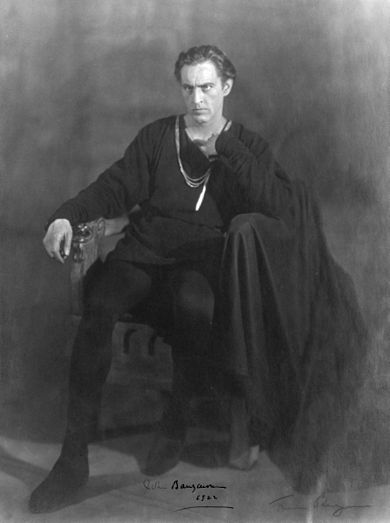
![Robert Cornelius, the first known photograph of a human in American history: The only history that matters.[citation needed]Citation needed is a joke](http://upload.wikimedia.org/wikipedia/commons/thumb/9/90/RobertCornelius.jpg/329px-RobertCornelius.jpg)



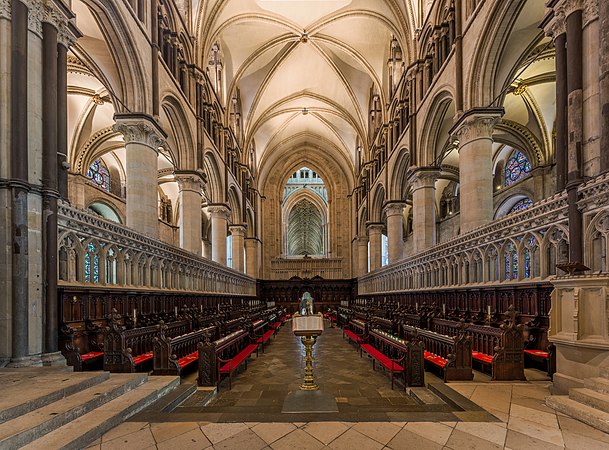
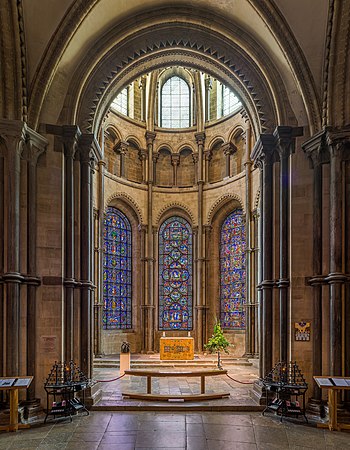
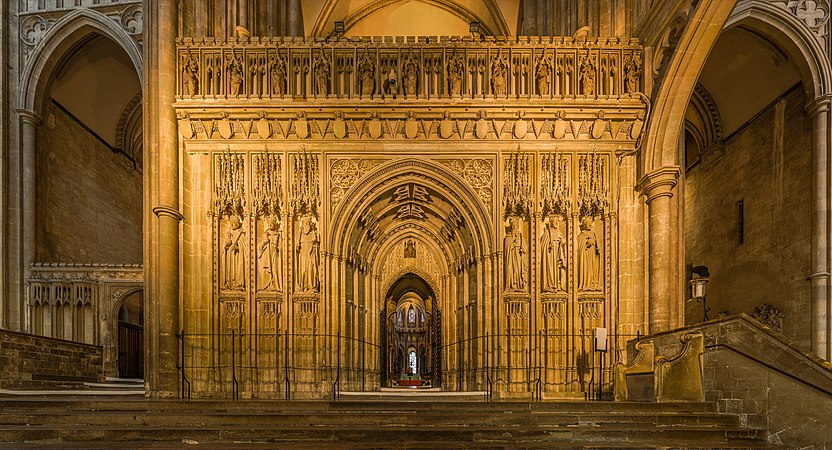
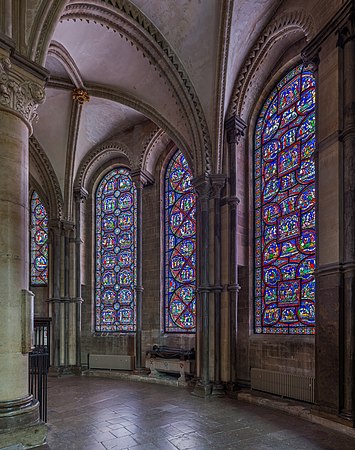
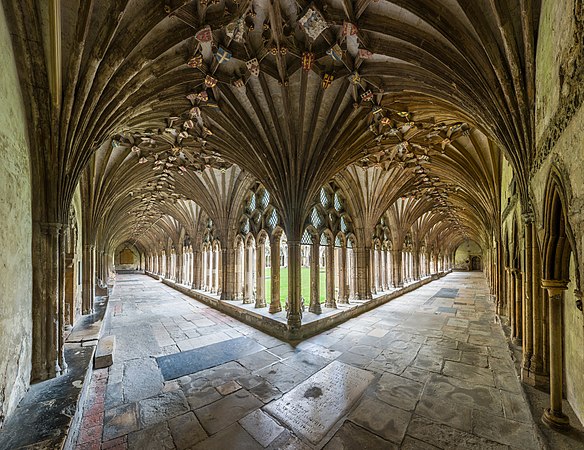

Discuss this story
Why is that piece entitled with citation needed? If I see the featured filmography examples, while being excellent filmographies one could are argue that they are ridiculously overcited.--Kmhkmh (talk) 14:49, 18 January 2015 (UTC)[reply]